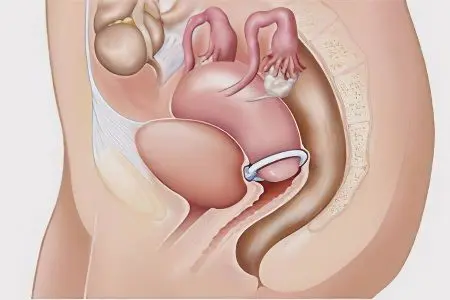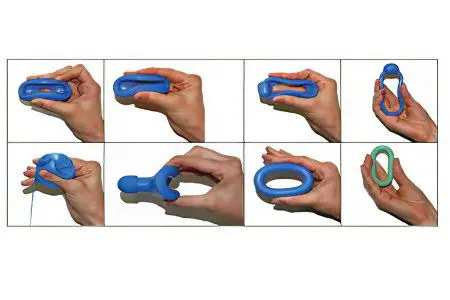
Uterine prolapse significantly reduces a woman’s quality of life. Most often, prolapse of this organ occurs in adulthood and old age. Pathology is characterized by physical discomfort, problems with urination and defecation. Sexual intercourse during uterine prolapse is unlikely or not feasible at all. A gynecological pessary is used to return a woman the opportunity to fully live and work, to partially solve the problems that have appeared along with the weakening of the muscles and ligaments of the uterus.
The gynecological ring is used in cases where surgery cannot be performed. Having decided to use a pessary, you need to remember that only an operation can finally save a woman from prolapse of the pelvic organs.
What is a pessary?

A pessary, or gynecological ring, is a product made of elastic medical silicone or latex. This hypoallergenic, safe device is inserted into the patient’s vagina by a doctor, easily occupies the desired location without affecting the woman’s activity and habitual lifestyle.
The main function of the gynecological ring is to create a support for the organ, preventing its displacement from the anatomically correct position. For each specific case of uterine prolapse, a certain type of pessary is selected, which differs from other rings in shape, size, diameter and type of purpose.
Types of pessaries:
urethral – has the shape of a ring with a thickening outward, is used to fix both the uterus and the urethra;
Cup, cup perforated – has the shape of a bowl with a large hole or perforation, is used for the average and initial level of uterine prolapse;
Cup-urethral – combines the qualities and advantages of both previous types;
Cubic, cubic perforated – has the shape of a cube with walls concave inward with a hole for removing secretions, is used for severe prolapse, worn for a short time (8-12 hours);
Mushroom – has the shape of a ring with a leg, is used for severe uterine prolapse, the pessary is removed at night;
Pessary of Hodja – used in special cases in women with anatomical features of the uterus and vagina, takes any form;
thin and thick ring – used in the initial stage of prolapse.
Each type of pessary has several sizes. If the size of the gynecological ring that a woman needs is calculated incorrectly, she will not be able to use the device. Therefore, the selection of a pessary should be entrusted to a doctor. So, for example, if, with a strong omission of the organ, a ring-type device is used, the risk of pushing the uterus through the ring and infringing it increases.
Video, which includes a description of the obstetric unloading pessary “Juno” and the method of its use:
Why is it necessary to use a pessary for uterine prolapse?

If you do not compensate for the prolapse of the uterus, the following complications may occur:
The development of colpitis, cervicitis, the penetration of infection into the uterus and ovaries due to the gaping of the genital gap and the low position of the cervix;
Leakage of urine during stress, laughter, lifting weights due to the prolapse of the anterior wall of the bladder;
The development of cystitis, pyelonephritis due to problems with urination;
Development of eczema and pyoderma due to skin irritation with urine;
Infringement of the uterus and vaginal walls in the genital gap, organ necrosis due to circulatory disorders;
Eversion of the uterus.
To prevent complications from uterine prolapse, a gynecological pessary should be worn.









